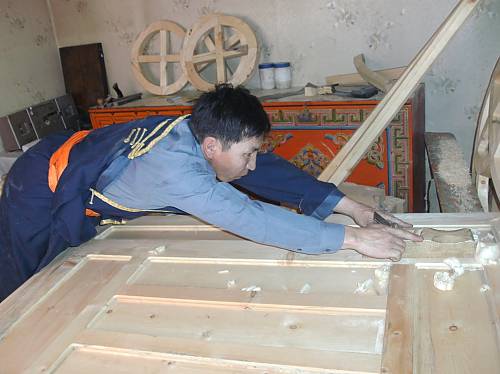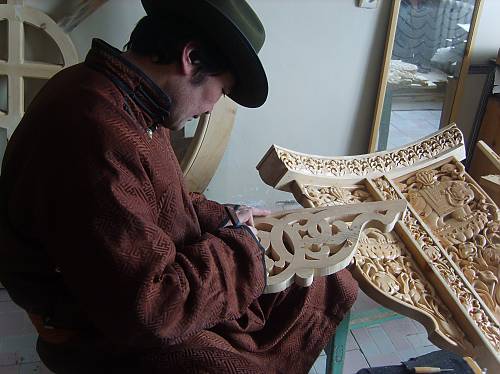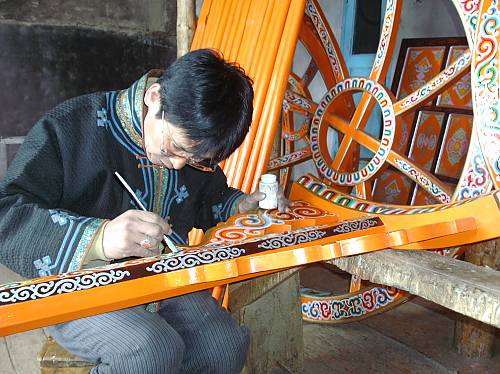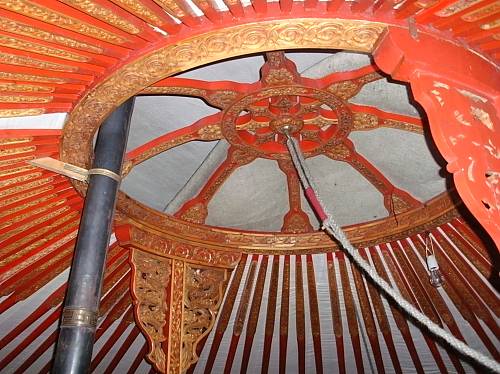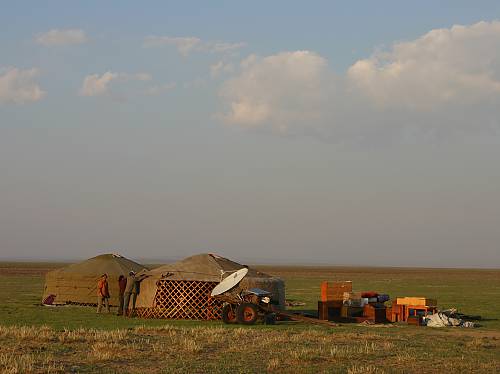Traditional craftsmanship of the Mongol Ger and its associated customs
Inscribed in 2013 (8.COM) on the Representative List of the Intangible Cultural Heritage of Humanity

Craftsmanship of the Mongol Ger is a traditional enterprise involving the labour of a household or group, with men carving the wood and both women and men engaged in painting, sewing and stitching, and felt-making. The Ger is a round structure of walls, poles and a peaked roof covered with canvas and felt, and tightened with ropes. It is light enough for nomads to carry; flexible enough to fold and pack; and sturdy enough to be dismantled and reassembled. The Ger can withstand Mongolia’s fierce spring winds. The structure is the same across the country: a wooden frame painted and decorated with traditional ornamentation, covers made of white felt and canvas, ropes of animal hair, flooring and carpets of hand-sewn felt, and furniture. Traditional craftsmanship is taught to the younger generations, principally through mentoring by a senior craftsperson. Dismantling and reassembling the Ger are always family operations, with children learning by watching their elders. Cutting and preparing sheep’s wool, making felt, stitching canvas and preparing woodwork are usually communal endeavours. As a traditional dwelling, the Mongol Ger plays an important social and cultural role for nomadic families and its makers are highly respected.

